With only 30% of recruiters receiving high-quality applications for their most recent hire, what factors influence application quality and how can businesses improve it?
Our most recent study on application quality looks at where quality gets lost in applications and the common indicators recruiters look for when matching applications with open roles.
Filtering incoming applications is one of the first steps in recruitment and low-quality applications are a significant problem that can delay hiring and increase costs, and an inefficient process can cost businesses high-quality candidates too.
We will explore how recruiters define quality, what factors impact it, and the areas businesses can improve on to get better quality applications.
Key findings
* Less than 1 in 3 (30%) of recruiters received high-quality applications for their most recent hire.
* 63% of recruiters are still reviewing incoming applications manually.
* 78% rely on CVs to evaluate candidates and 45% ask for cover letters, but 18% of candidates say they skipped applying for roles that required a cover letter.
* 65% of jobseekers have found expectations in job ads unclear in their most recent search but 74% of recruiters say a clear job description is the most important factor to receiving better applications.
Application quality is a market-wide problem causing inefficiencies in hiring

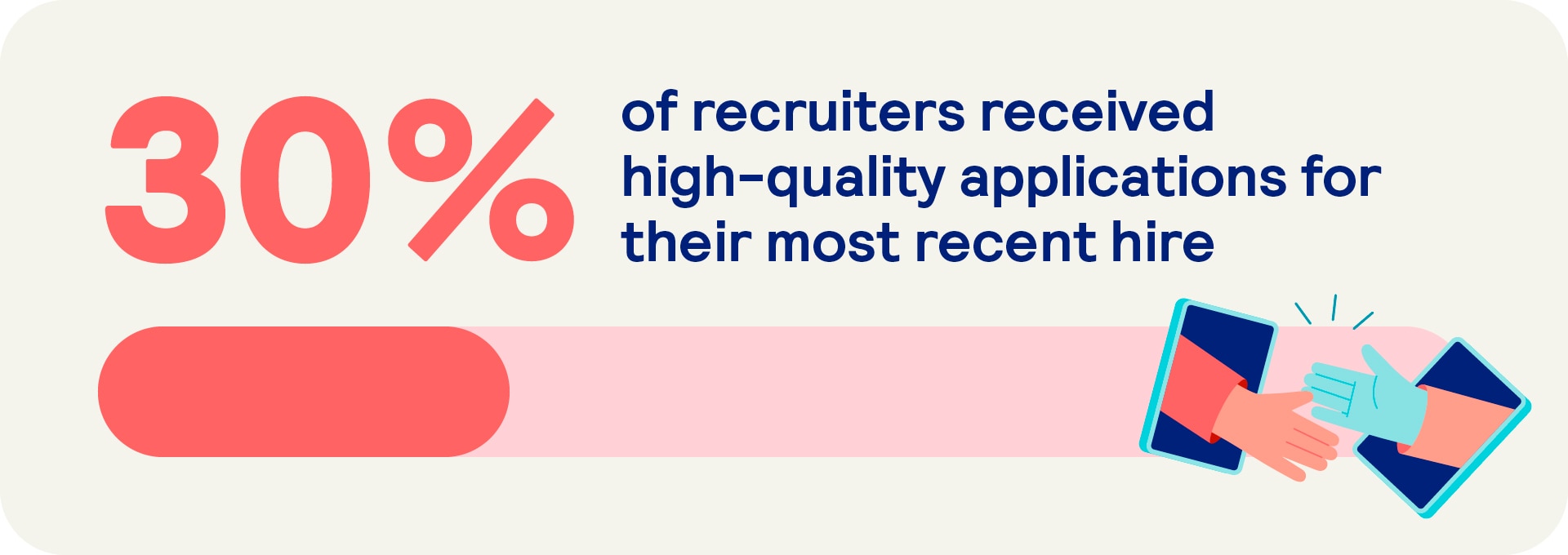
Addressing application quality is a must for businesses to make hiring faster, smarter, and more successful. Meanwhile, identifying high-quality applications quickly can secure sought-after candidates who are moved through the pipeline faster and are approached with multiple offers.

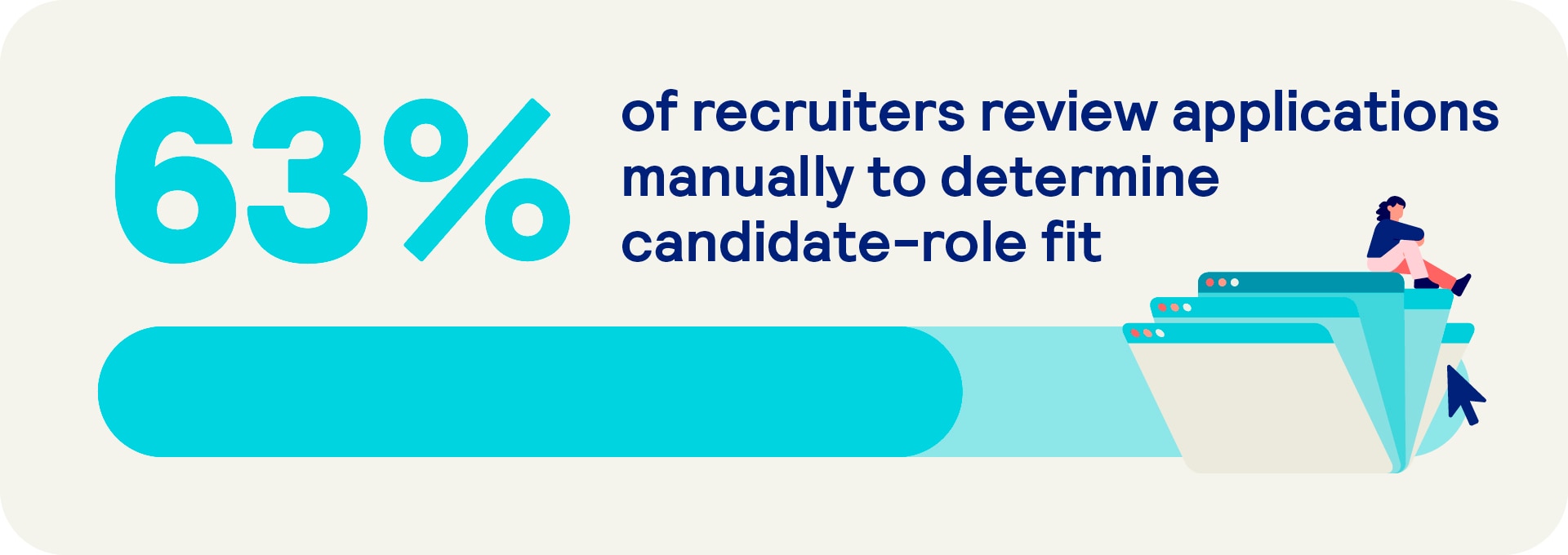
How recruiters evaluate applications and the gaps in efficiency
63% of recruiters are still reviewing incoming applications manually, meaning they often get overwhelmed with hundreds of CVs. Although human decision-making is needed throughout the hiring process, vetting applications manually is a time-consuming task and may introduce bias into hiring decisions.
On the other hand, Applicant Tracking Systems (ATS), pre-screening questionnaires, candidate-matching technologies, and AI can quicken the screening process so that recruiters go back to suitable candidates as quickly as possible.
We found that over two-fifths of recruiters use systematic background checks (43%), pre-application questionnaires (41%), and structured criteria assessments (41%), while only 24% use Application Tracking Systems (ATS) and matching scores (18%) which are opportunities for hiring teams to improve the efficiency of hiring and the quality of applications they receive.
Structured criteria assessments and skills-based pre-application questionnaires particularly help recruiters filter out based on real capabilities, knowledge, and fit.
Additionally, structured criteria leads to fairer and more inclusive hiring as every applicant is judged by the same standards. With short pre-application questionnaires, recruiters get a stronger early indication of candidate quality.

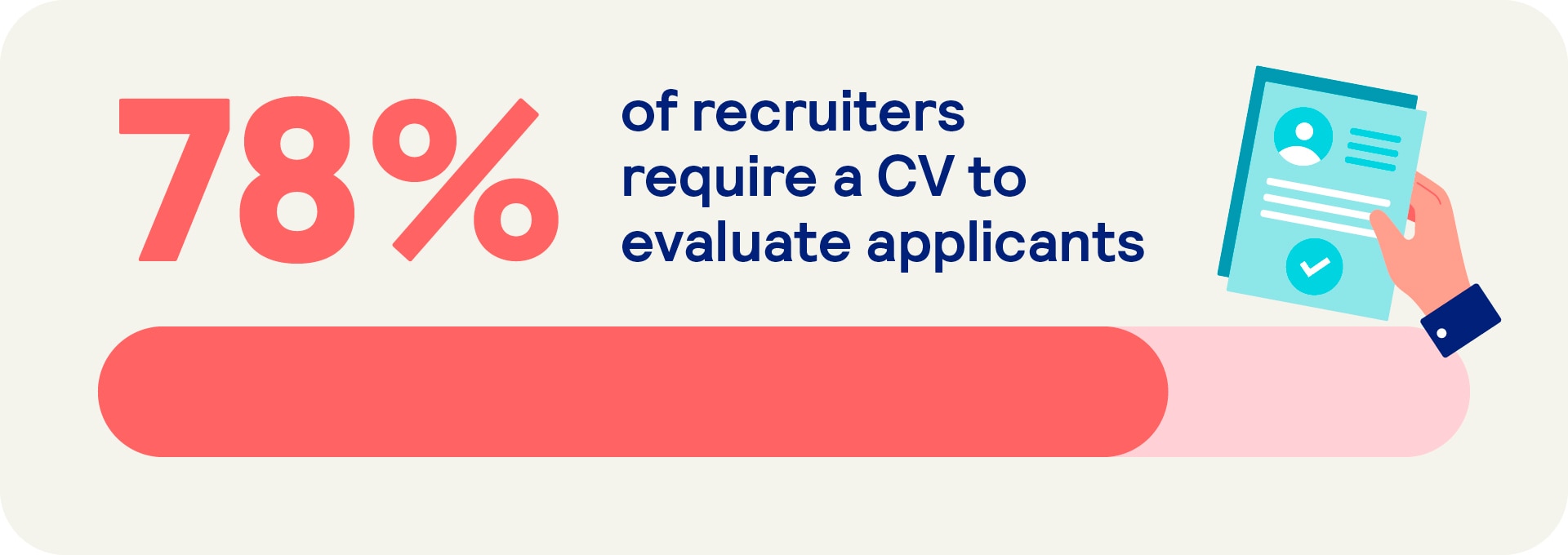
78% of recruiters rely on candidate CVs to evaluate applications and 58% rely on application forms. More than half ask for references and recommendations (51%) and slightly fewer ask for a cover letter (45%).
Our research shows that cover letters are losing their relevance with just 14% of recruiters deeming them not important.
Currently, over half (51%) of recruiters consider cover letters as beneficial to applications while over a third (36%) still find them essential.
The main goal of a cover letter is to get a sense of motivation, communication skills, and cultural fit – which recruiters would be able to gauge from short pre-application questionnaires. This would help identify candidate-role fit quicker while retaining candidates and increase competitiveness for sought-after talent.
Why applications are getting rejected and what recruiters should rethink

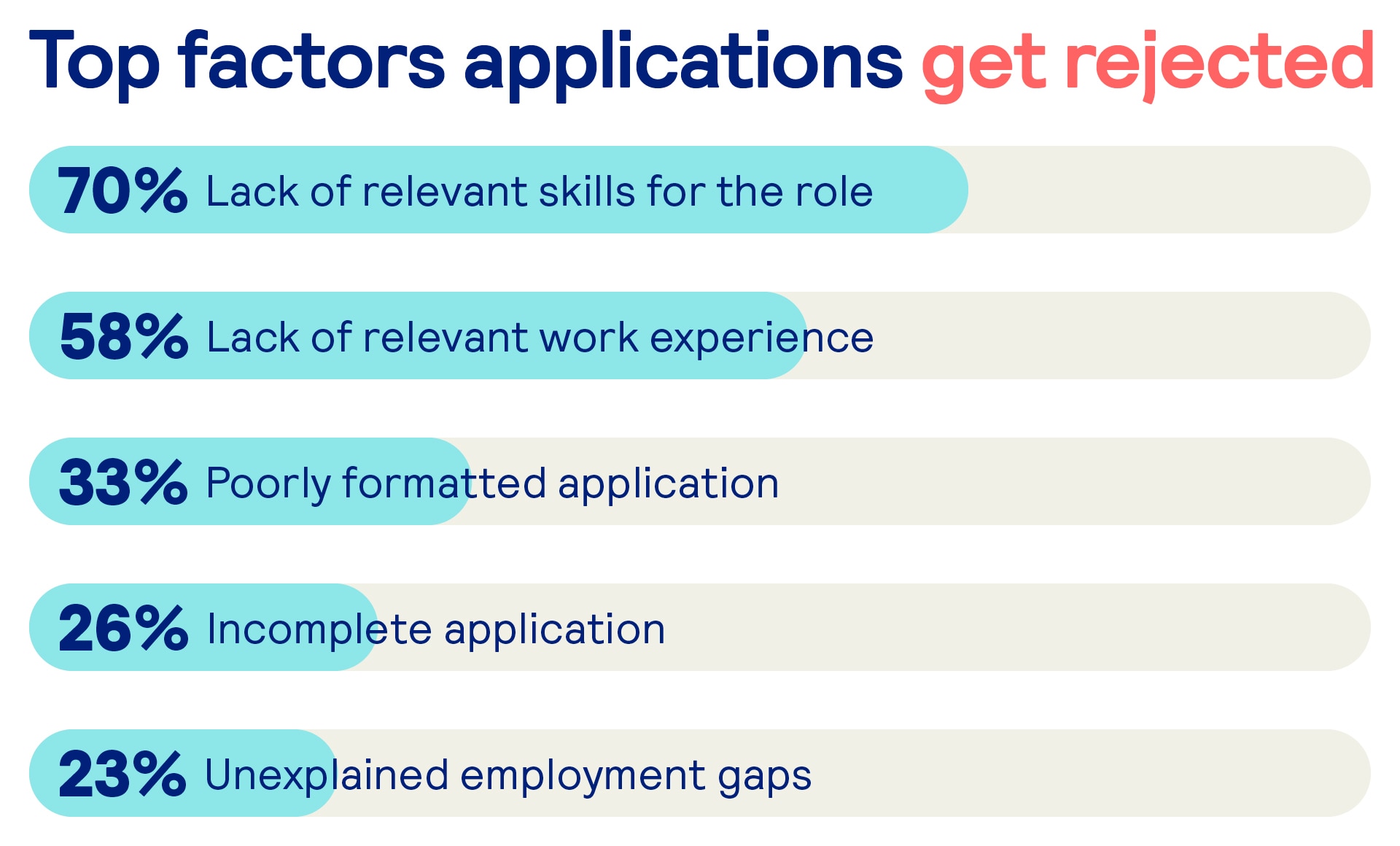
1 in 3 recruiters say they reject applications because they’re poorly formatted, and 26% turn down ones that are incomplete. However, poorly formatted and incomplete applications are sometimes due to application processes that aren’t user-friendly.
22% say they filter out applications containing spelling errors, but this should be reviewed for roles that don’t require advanced writing skills. Almost 1 in 4 (23%) of applications are also rejected due to unexplained employment gaps, which could introduce bias into the process and eliminate candidates due to personal circumstances. Employment gaps, in particular, should be reassessed by recruiters – especially given the current labour market landscape.
Factors that impact application quality
Receiving better-quality applications is a significant step in hiring the right people. Simply put, better quality applications leads to faster, cheaper, and better hires, which builds a stronger business.
Download our factsheet for tips to improve the quality of applications.
You’ll find out:
* How your competitors define the quality of applications
* Which screening criteria is considered essential vs. desirable
* What you can do against low impressions, listing views, and applications
* How to write job ads for better-quality applications
1. A clear and detailed job description

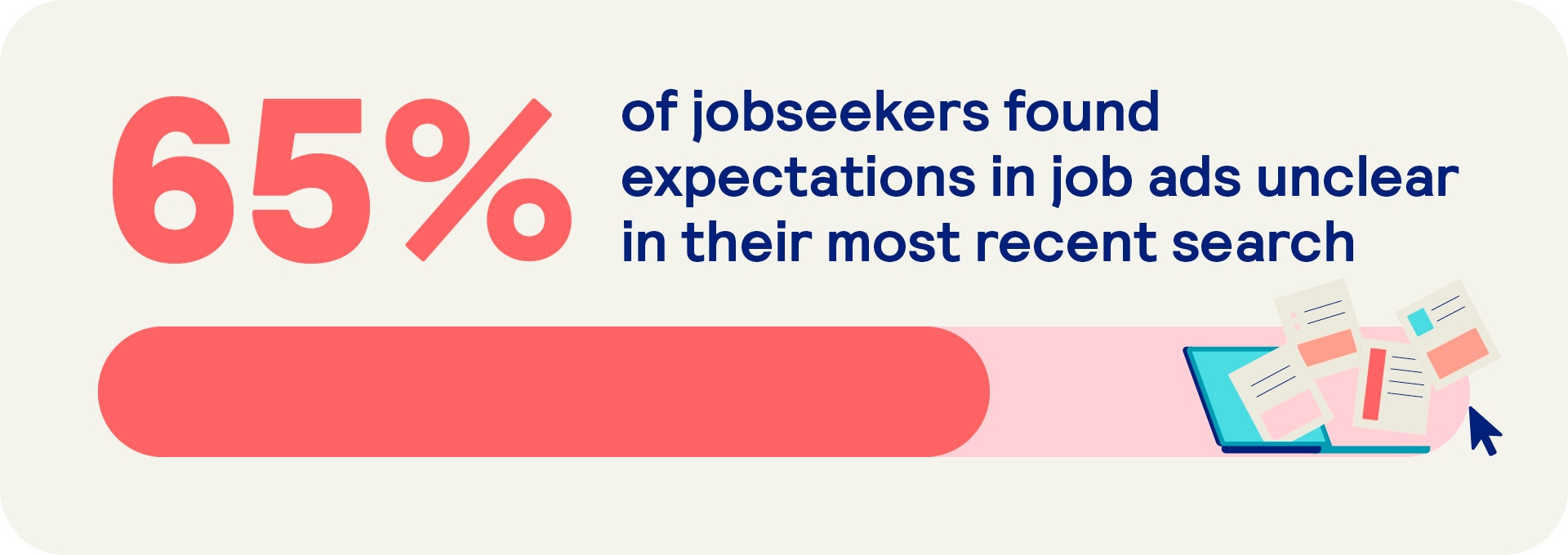
Most (74%) recruiters rely on a clear and detailed job description to improve the quality of applications, but almost 65% of jobseekers have found expectations in job ads unclear in their most recent search.
Candidates feel uncertain about applying when:
* The job ad doesn’t include salary information (59%)
* They feel unsure if their experience is insufficient (41%)
* Job title seems unclear (39%)
* There are too many requirements in the description (37%)
* The details on benefits seem vague (27%)
A strong offer is a crucial part of the job advertisement. Read our NIJobs salary and benefits guide for the latest trends to help you benchmark your offer.
So, what gives a job advertisement the clarity candidates are looking for?
* Jargon-free language
* Essentials vs. desirable skills and qualification
* Years of experience required
* Day-to-day responsibilities of the role
* Flexible working arrangements
* A salary range, if possible
* Company values
Making sure the above are listed in your advertisement and checking the language you use for bias can help you attract better quality applications. Additionally, sharing your hiring timeline in the job ad would set expectations and signal your organised and clear approach.
2. The user experience of your hiring process
A streamlined and user-friendly application experience signals professionalism and attracts stronger candidates. Top talent often have options and they may skip refilling redundant application forms, avoid vague job ads, or abandon applications when they run into technical issues with the application platform.
When the process is quick, transparent, and tailored to the role, it increases candidates’ engagement. But it doesn’t end there; candidates also expect timely communication from companies. So, thanking all applicants and keeping them updated on the process can protect your employer branding and keep your potential hires in the hiring process.
3. Your employer branding and EVP
Employer branding and a clear employer value proposition (EVP) play a crucial role in attracting higher-quality applications. A strong employer brand expands your talent pool by making your company more visible and appealing to the right candidates.
When your company’s messaging clearly communicates its values, offerings, and the kind of people that could thrive in your culture, it helps potential applicants self-assess fit and engage with the roles advertised more meaningfully.
A well-defined employer brand and EVP make it easier to attract not just more applicants, but the right ones.
About the study
To understand what stands in the way of receiving better quality applications, we surveyed 624 recruiters and 474 jobseekers across the UK and Northern Ireland between March 19th and March 31st 2025, and May 2nd and May 14th 2025, respectively.
Recruiter perspectives in this factsheet are drawn from broader UK insights provided by The Stepstone Group data, which includes Northern Ireland as part of the overall dataset. We are actively evolving our research methods to develop deeper, region-specific insights and ensure Northern Ireland’s recruitment landscape is accurately and independently measured.


